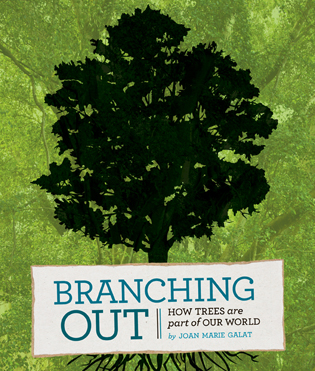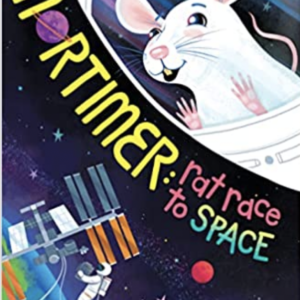Description
Reviews
Publishers Weekly wrote:
An informed and elegant introduction to trees as resources for humans and animals, objects of natural beauty, and sources of inspiration.
— PUBLISHERS WEEKLY
SCHOOL LIBRARY JOURNAL: “Full of useful information and eye-catching images … A solid overview.”
KIRKUS REVIEWS: Trees matter in our world. …An informative introduction for middle-grade readers, especially useful in schools. [Excerpt]
CHARIS COTTER on NATIONAL READING CAMPAIGN wrote: This is a perfect book to dip into for a science project or to awaken a child’s interest in the natural world.
The ASSOCIATION of CHILDREN’S LIBRARIANS OF NORTHERN CALIFORNIA rated Branching Out ‘Outstanding’ and nominated it for the Distinguished List. “The inspiring dialogue about trees and their benefits to humans, animals and the environment make this book a valuable addition to school and public library collections.”
CM MAGAZINE:
Joan Marie Galat has wisely chosen examples of how humans use trees that will appeal to youth while still conveying the importance of each tree to the local ecosystem. Young readers who enjoy nonfiction and have an interest in environmental issues will enjoy this book. Both public and school libraries will find it a useful addition to their collections. Recommended.
This is Literacy wrote:
There is a lot of tightly-packed scientific information here, but Galat’s engaging style helps make it readable. She uses appealing sensory images to draw the reader in…This is a perfect book to dip into for a science project or to awaken a child’s interest in the natural world. [Excerpt]
Kent Miller on Canadian Teacher wrote:
Branching Out is more than an encyclopedia of tree variety—the last ten pages encourage environmental stewardship through conservation, planting and recycling. On the final page is a list of global agencies that promote the replanting of trees worldwide. [Excerpt]
Curriculum Connections
Branching Out is a useful reference when exploring topics such as habitat, global warming, plant and animal diversity, the effects of human impact on the environment, and actions which can reverse deforestation.
Awards and Recognition
– Santa Monica Public Library Green Prize for Sustainable Literature, 2015
– Honorable Mention (shortlisted), Canadian Authors Association Exporting Alberta Award, 2014
– Included on Distinguished Books by the Association of Children’s Librarians of Northern California, 2014
– The Year’s Best Nonfiction Book List (Preschool – Grade 6), Resource Links Magazine, 2014
– Starred review, Canadian Children’s Book Centre’s Best Books Spring Edition, 2015
Excerpt:
The downy birch is the best tree for putting up with harsh Arctic conditions, so it’s no wonder it’s popular with animals in the far north. Moose, deer and hare browse on its shoots. Birds, mice, and other animals eat its seeds. Insects come to its flowers. The insects attract bats, which come to nest and roost. The peeling bark found on birch trees provides a perfect habitat for bats, insects, and small birds looking for places to hide.
Read More on Amazon.




